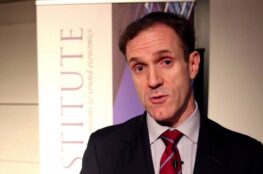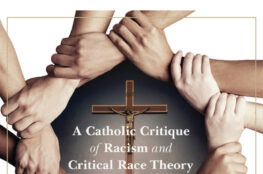A number of false dichotomies often come to light when discussing traditional Catholicism, particularly with non-traditionalists. The most basic—and erroneous—distinction which is often made is between “obedient” and “disobedient” traditionalists. “Obedient traditionalists,” so the story goes, rejoice over the generosity of Summorum Pontificum (SP); “accept fully the Second Vatican Council” (whatever that means); and know to keep their traps shut with respect to concrete problems in the Catholic Church, particularly if those problems can be linked to certain shifts in mid-20th C. theology or ambiguous papal pronouncements. “Disobedient traditionalists,” on the other hand, will speak clearly, even forcefully, on the substantive superiority of the Tridentine Mass as compared to the Novus Ordo Missae. These same “disobedient traditionalists” are unashamed about pointing to problematic passages embedded in some of the conciliar texts while also standing firm against innovations such as the splitting of the pastoral from the doctrinal. In short, these traditionalists are “disobedient,” hence “bad,” because they attempt to exercise the right of open and frank discussion which, ostensibly, has been in play since the 1960s.
There are either either/or fallacies which get bandied about within traditional Catholicism itself. Some, for instance, hold that one is either an “Ecclesia Dei/SP traditionalist” (i.e., you attend the old Mass at a diocesan parish) or you’re an “SSPX traditionalist.” You have to decide; and once you have decided, you have made your “true loyalties” known for a lifetime. The problem with this perspective, which is prevalent in certain circles, is that it appears to presuppose, even if only lightly, that the Fraternity of St. Peter or Institute of Christ the King Sovereign Priest belong to a different Church than the Society of St. Pius X (SSPX). This is perhaps why some people feel that they can “hide out” in the SSPX, as if it were not part of that cancer-ridden Corpus Mysticum that “all those other Catholics” go to. I for one would like to think the Society would be appalled at such a notion. While it is true that the SSPX is “keeping its distance” so-to-speak from the epicenters of confusion and turmoil in the Church, that’s not the same as being “outside of the Church.” There are today, and always have been, numerous parishes, monasteries, orders, and dioceses which have chosen to board the windows and reinforce the doors in stormy times. In fact, there are more “locales” within the Church today doing just that than some people seem to realize. We should thank God such safe havens exist and ask Him to bless the establishment of many more.
Of course, traditionalism, like any movement, is hardly monolithic. There are many self-identified “trads” who, for reasons I cannot quite understand, find that it is perfectly acceptable to laud the Tridentine Mass, old devotions, and even the time-tested theology of St. Thomas while openly embracing radical forms of political, social, and economic liberalism. Any traditional Catholic worth his salt ought to know the social teachings of Popes Pius IX, Leo XIII, St. Pius X, Pius XI, and Pius XII. Quas Primas should be, at the very least, on their annual reading list. And yet the vague and ill-defined movement of what I have called “Catholic libertarianism” has more than its fair share of traditional Catholics. Some might say these individuals are ill-formed or too caught up with the incorrect notion that “traditionalism” comes does to “liturgical aesthetics” (for some it does). That may explains some of it. I do believe, however, that the harder truth is that many of the traditionalists who accept the tenets of liberalism do so because they have been blinded by the “neo-Americanist” lie that somehow, someway, the political ordo established in 1776 and given final contours in 1789 can be rehabilitated into a virtuous republic directed toward the common good—if only we let the market do the moving and the government next-to-nothing. Such folks, well-intentioned though they may be, ought to be handed Christopher Ferrara’s Liberty: The God That Failed this Christmas.
As for “liturgical aesthetics” or just the liturgical aspects of traditional Catholicism, it is well known by now that there are some who consider the presence of a third Confiteor at Mass to be the ultimate litmus test of orthodoxy. There are also plenty of traditionalists who believe that their sanctity or, rather, the lack of sanctity they (wrongly) perceive in others has everything to do with the 1962 Missale Romanum. Granted, as Fr. John Hunwicke and many other thoughtful liturgical experts have noted, there are good grounds to have serious reservations concerning some aspects of the 1962 liturgical books; but the “1954-or-else” mentality has led a few too many to select a strange hill to die on. Faithful followers of the 1962 liturgical books have repeatedly stated that those books are the beginning, not the end, of the proper restoration of the Roman Rite. It’s a shame that their “liturgically cultured” despisers haven’t bothered to listen.
Some of what I have noted here points toward a project which I do not feel competent or strong enough to undertake, namely the rethinking and further appreciation of what it means to be a traditional Catholic. This is 2014, not 1974. A large part of me suspects that some of the falsities surrounding, if not bound up with, traditional Catholicism stems from trying to fit our knowledge of the current crisis into shopworn categories while deploying moth-eaten arguments to combat them. This is not to say that we need an entirely new “traditionalism”; that would be absurd. What it does mean, however, is that traditional Catholics, particularly of this and the forthcoming generation, need to better understand the pettiness of what often divides us while keeping a clear eye on the troubling new forces which have been brought to bear against Christ’s Holy Church. Owen White, when profiling yours truly, referred to me as a “neo-traditionalist.” I have some idea of what he meant by that, but not a complete one. Fleshing that idea out further, not for the sake of my own self-designation but for the strengthening of the traditional movement as a whole, should be shifted to the front burner as soon as possible.



